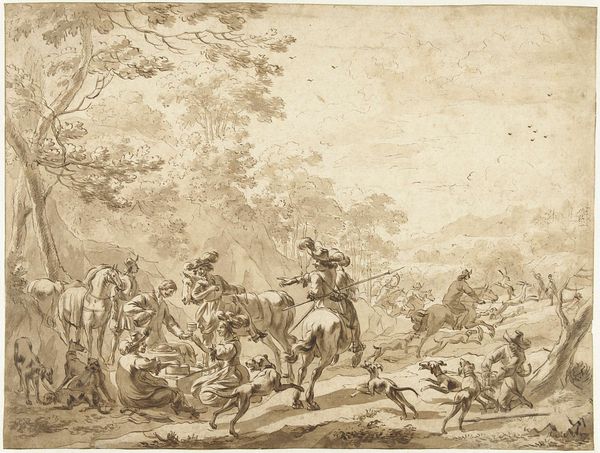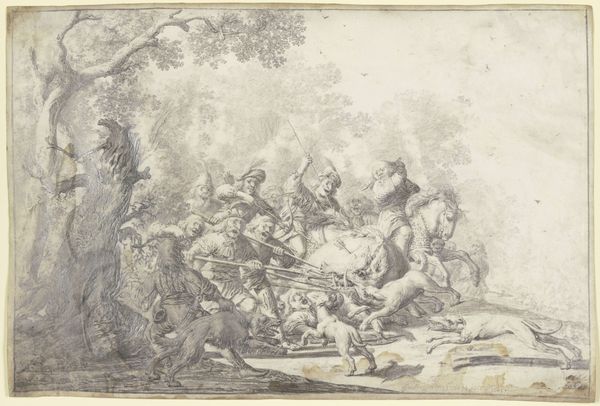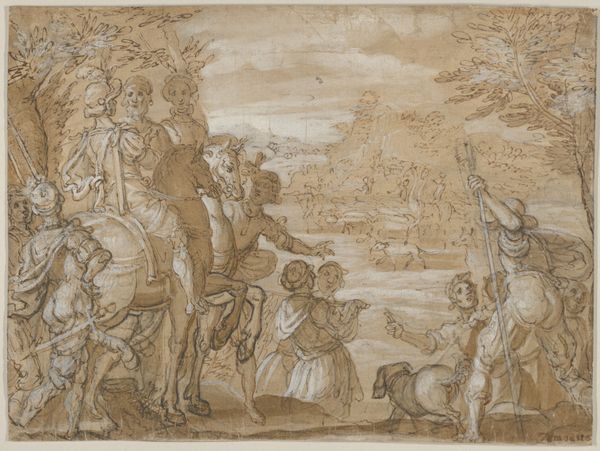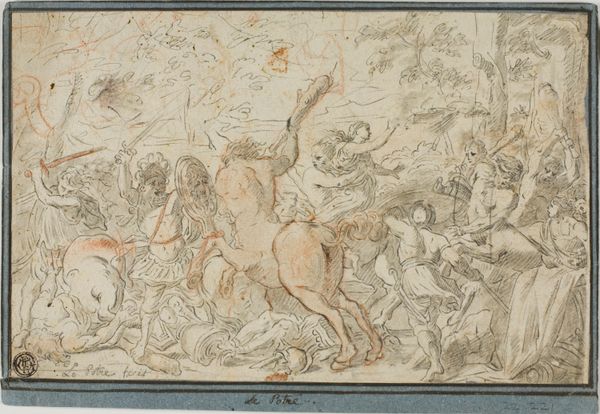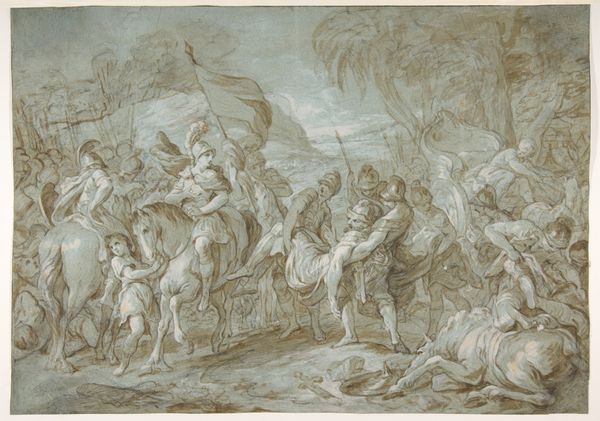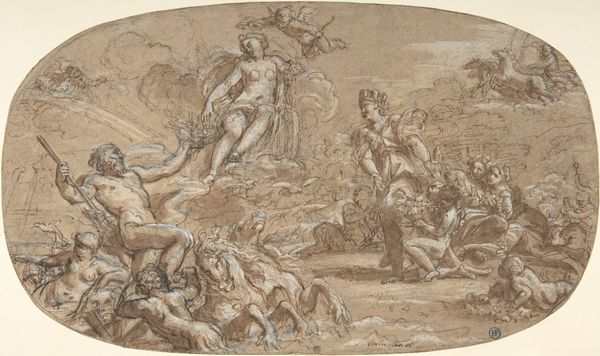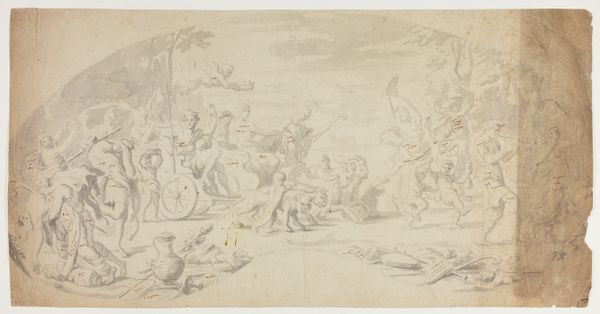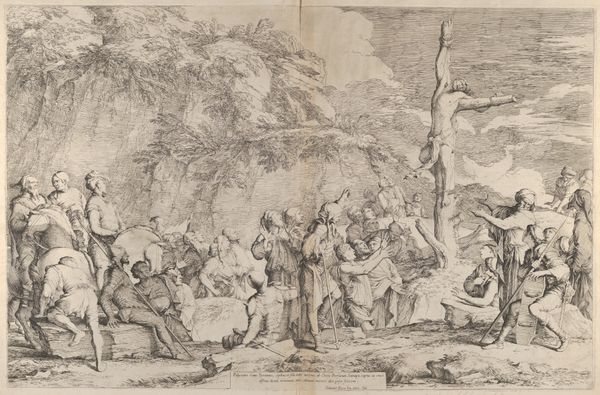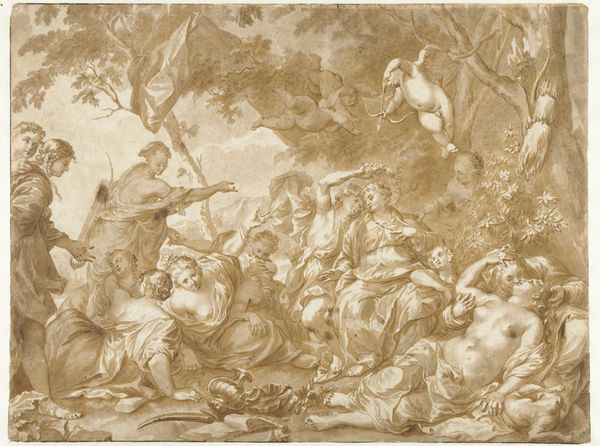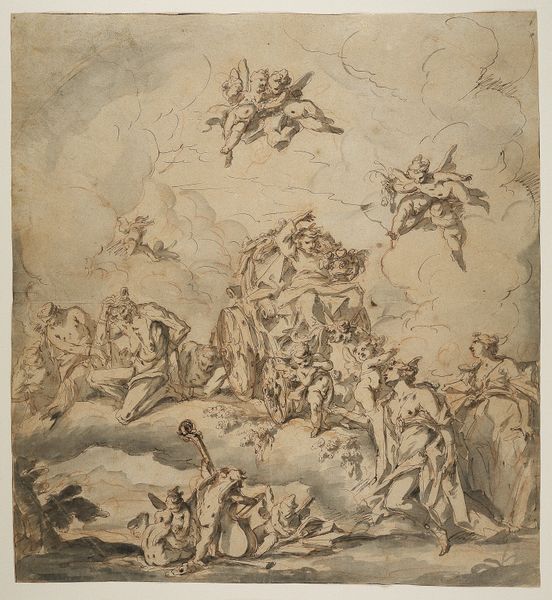
Moses and the Chosen People Behold the Drowning of the Egyptian Army in the Red Sea 1627 - 1703
0:00
0:00
drawing, print, ink, pen, charcoal
#
drawing
#
natural stone pattern
#
toned paper
#
baroque
# print
#
landscape
#
charcoal drawing
#
figuration
#
charcoal art
#
oil painting
#
ink
#
pen
#
charcoal
#
history-painting
Dimensions: 11-3/8 x 16-5/8 in. (28.9 x 42.3 cm)
Copyright: Public Domain
Editor: This is "Moses and the Chosen People Behold the Drowning of the Egyptian Army in the Red Sea" created between 1627 and 1703 by Domenico Piola, it’s an ink and charcoal drawing on toned paper. I am struck by the monochromatic color, it almost makes the tragic event look peaceful, maybe even serene? How would you interpret this work? Curator: This piece raises some fascinating questions about artistic production and labor in the Baroque period. We see the final product, a beautiful drawing rendered in ink and charcoal. But what about the paper itself? Was it manufactured locally or imported? And who prepared the toned ground? Each step involved human labor, skill, and materials sourced from specific locales. Editor: So you are saying the final image on paper is the very last step of a long process, influenced by many other aspects beyond artistic expression? Curator: Precisely! Even the act of choosing these materials over others - say, a fresco on a palace wall versus a drawing for a private collection – reflects socio-economic factors. What impact would those factors have on a viewer during the Baroque period versus a modern one viewing the artwork now in the MET? How does knowing where that charcoal originated influence our understanding? Editor: It's like tracing the artwork back through layers of creation, involving not just the artist's hand, but a network of laborers and global trade routes. I hadn't considered the toned paper as a deliberate, manufactured choice that is influencing my own interpretation. Curator: Right. Think of it, we're looking at a moment of salvation, a key story of the Bible, filtered through the lens of Domenico Piola, yes, but also through a complex web of materials and making. Editor: Thank you for pointing out the materials. It really changes the way one thinks about "creation" and puts my interpretation into perspective.
Comments
No comments
Be the first to comment and join the conversation on the ultimate creative platform.

